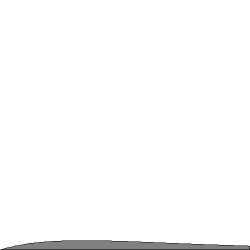
Let $F$ be a real valued function of two real variables defined in some region around $(a,b)$. Then the standard limit [ correct? ] of $F$ as $(x,y)$ approaches $(a,b)$ equals $L\,$ if and only if for every $\epsilon > 0$ there exists $\delta > 0$ such that $F$ satisfies: $$ | F(x,y) - L | < \epsilon $$ whenever the distance between $(x,y)$ and $(a,b)$ satisfies: $$ 0 < \sqrt{ (x-a)^2 + (y-b)^2 } < \delta $$ We will use the following notation for such limits of functions of two variables: $$ \lim_{(x,y)\rightarrow (a,b)} F(x,y) = L $$ Note. At this moment, we do not wish to consider limits where (one of) the independent variable(s) approaches infinity.
Next we consider the following iterated limit:
$$
\lim_{y\rightarrow b} \left[ \lim_{x\rightarrow a} F(x,y) \right] = L
$$
Theorem. Commutativity of iterated limits.
$$
\lim_{y\rightarrow b} \left[ \lim_{x\rightarrow a} F(x,y) \right] =
\lim_{x\rightarrow a} \left[ \lim_{y\rightarrow b} F(x,y) \right] =
\lim_{(x,y)\rightarrow (a,b)} F(x,y)
$$
Proof. We split the first iterated limit in two pieces:
$$
\lim_{x\rightarrow a} F(x,y) = F_a(y)
$$
And:
$$
\lim_{y\rightarrow b} F_a(y) = L
$$
Thus it becomes evident that the (first) iterated limit is actually defined
as follows.
For every $\epsilon_x > 0$ there is some $\delta_x > 0$ such that:
$$
| F(x,y) - F_a(y) | < \epsilon_x \quad \mbox{whenever}
\quad 0 < | x - a | < \delta_x
$$
For every $\epsilon_y > 0$ there is some $\delta_y > 0$ such that:
$$
| F_a(y) - L | < \epsilon_y \quad \mbox{whenever}
\quad 0 < | y - b | < \delta_y
$$
Applying the triangle inequality $|a| + |b| \ge |a + b|$ gives:
$$
| F(x,y) - F_a(y) | + | F_a(y) - L | \ge | F(x,y) - L |
$$
Consequently:
$$
| F(x,y) - L | < \epsilon_x + \epsilon_y
$$
On the other hand we have:
$$
0 < | x - a | < \delta_x \qquad \mbox{and} \qquad 0 < | y - b | < \delta_y
$$
Hence:
$$
0 < \sqrt{ (x-a)^2 + (y-b)^2 } < \sqrt{ \delta_x^2 + \delta_y^2 }
$$
This is exactly the definition of the above standard limit of a function of two
variables if we put:
$$
\epsilon = \epsilon_y + \epsilon_y \qquad \mbox{and} \qquad \delta = \sqrt{\delta_x^2 + \delta_y^2}
$$
Therefore:
$$
\lim_{y\rightarrow b} \left[ \lim_{x\rightarrow a} F(x,y) \right] =
\lim_{(x,y)\rightarrow (a,b)} F(x,y)
$$
In very much the same way we can prove that:
$$
\lim_{x\rightarrow a} \left[ \lim_{y\rightarrow b} F(x,y) \right] =
\lim_{(x,y)\rightarrow (a,b)} F(x,y)
$$
QED

It is seen that Georgy's function
converges to a Dirac delta at $x=0$.
This is similar to the behaviour of a simpler function at :
Iterated Limits Schizophrenia